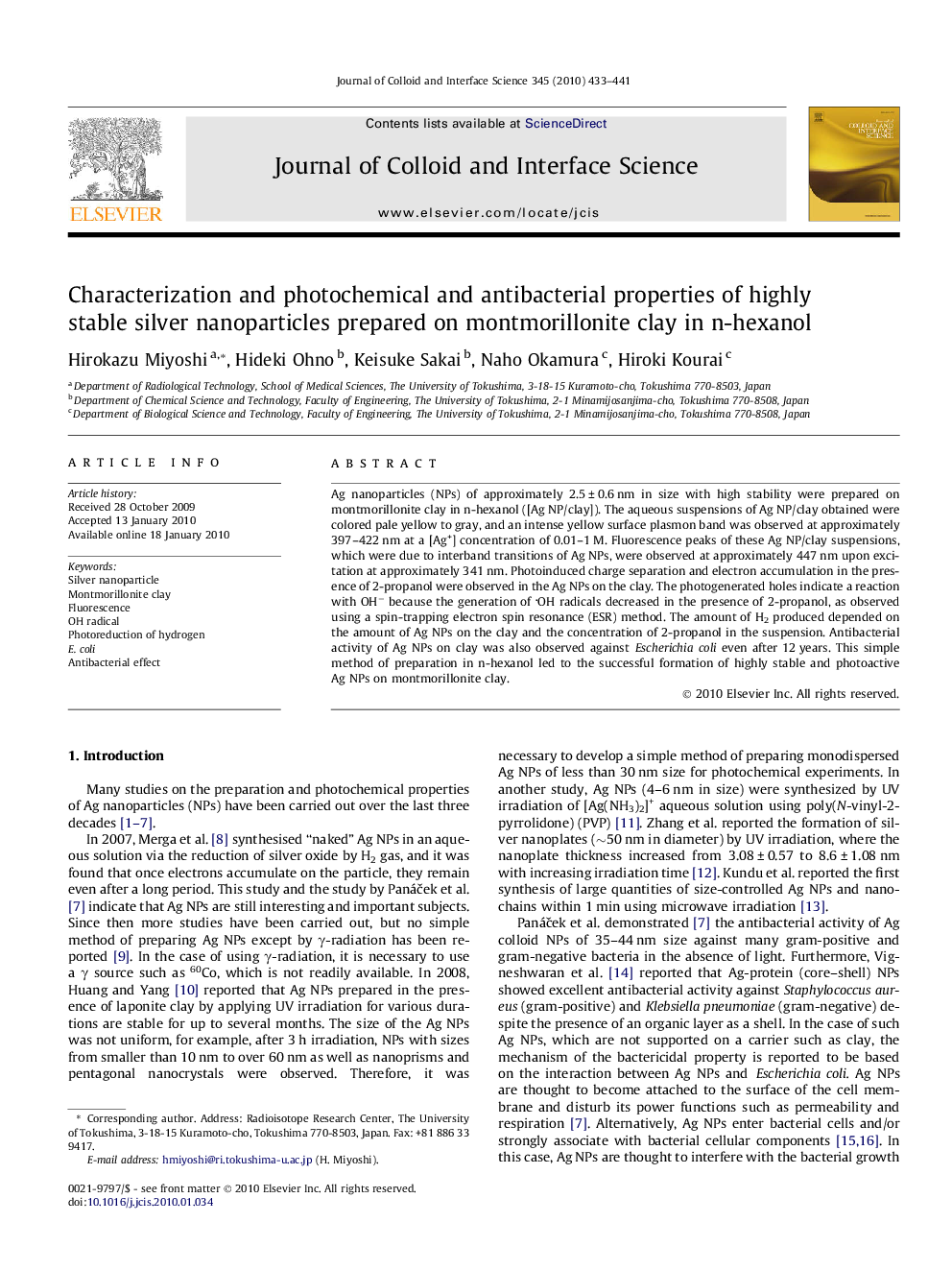| Article ID | Journal | Published Year | Pages | File Type |
|---|---|---|---|---|
| 609893 | Journal of Colloid and Interface Science | 2010 | 9 Pages |
Ag nanoparticles (NPs) of approximately 2.5 ± 0.6 nm in size with high stability were prepared on montmorillonite clay in n-hexanol ([Ag NP/clay]). The aqueous suspensions of Ag NP/clay obtained were colored pale yellow to gray, and an intense yellow surface plasmon band was observed at approximately 397–422 nm at a [Ag+] concentration of 0.01–1 M. Fluorescence peaks of these Ag NP/clay suspensions, which were due to interband transitions of Ag NPs, were observed at approximately 447 nm upon excitation at approximately 341 nm. Photoinduced charge separation and electron accumulation in the presence of 2-propanol were observed in the Ag NPs on the clay. The photogenerated holes indicate a reaction with OH− because the generation of OH radicals decreased in the presence of 2-propanol, as observed using a spin-trapping electron spin resonance (ESR) method. The amount of H2 produced depended on the amount of Ag NPs on the clay and the concentration of 2-propanol in the suspension. Antibacterial activity of Ag NPs on clay was also observed against Escherichia coli even after 12 years. This simple method of preparation in n-hexanol led to the successful formation of highly stable and photoactive Ag NPs on montmorillonite clay.
Graphical abstractThis novel method of preparation on montmorillonite clay in n-hexanol was very effective for fabricating photoactive Ag NPs, which remained stable on the clay for 12 years, provided a reaction site for photoredox reactions and exhibited antibacterial behavior against E. coli.Figure optionsDownload full-size imageDownload high-quality image (75 K)Download as PowerPoint slide
